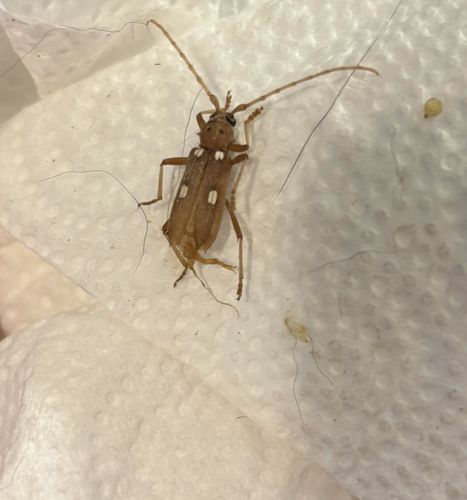Longhorn beetle
Scientific Name: Family Cerambycidae (specific genus/species cannot be determined from the image alone)
Order & Family: Order: Coleoptera, Family: Cerambycidae
Size: Highly variable depending on the species, ranging from 3 mm to over 150 mm (most common species are 10-60 mm).

Natural Habitat
Forests, woodlands, orchards, and areas with trees or wooden structures. They are especially attracted to dead or decaying wood, and some species are found in human dwellings infesting timber.
Diet & Feeding
Adult longhorn beetles typically feed on pollen, nectar, sap, or sometimes leaves. The larvae (grubs) are xylophagous, meaning they bore into and feed on wood (living, dying, or dead trees, or timber products).
Behavior Patterns
Adults are typically most active during the day and can be found on host plants. Larvae bore into wood, consuming the inner layers of wood and creating tunnels. The life cycle can span one to several years depending on the species and environmental conditions.
Risks & Benefits
Risks: Many species are significant pests of trees and lumber, causing damage to forests, orchards, and wooden structures. They can bore into freshly cut timber, processed lumber, and even furniture. Benefits: As decomposers, the larvae help break down dead wood, contributing to nutrient cycling in forest ecosystems.
Identified on: 8/25/2025